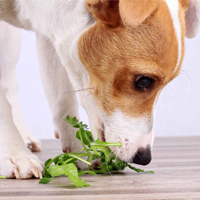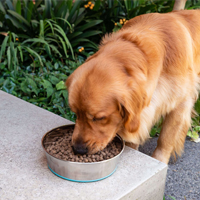
The Fine (And Surprising) Art of Canine Massage
It’s not something that is considered very often, but it turns out that there really is such a thing as canine massage.
We all know that massage is enjoyable and healthy for humans and we all know that there are many benefits, from stress relief to circulation assistance, that can come out of a well-done massage.
But massages also have great benefits for our canine friends including a number of massage techniques specifically for dogs and even qualified therapists arising in a field that is finally having some light shed upon it.
Where did it come from?
It is widely believed that canine massage sort of evolved from equine massage. The art of massaging horses came out of Jack Meaher, a physical therapist who started to work with horses in the 1970s after years spent in sports massage.
He started to work with show horses and racing horses, even massaging the animals that were on the Olympic team.
From there, massage started to expand to other animal breeds. The benefits were becoming clear.
What are the benefits of canine massage?
Because research has shown the various similarities in muscular and skeletal structures between dogs and human beings, a lot of the benefits enjoyed by people receiving massages are also enjoyed by our
four-legged friends.
These include:
- Reduced stress levels
- Increased circulation
- Decrease in muscle soreness
- Increase in lymphatic drainage
- Better joint movement
- Recovery assistance from exercise
- Calming of a nervous dog
- Reduction in the build-up of scar tissue from injuries and/or surgeries
- Enabling proper range of motion
- Improved bond between humans and pets
- Assistance in focus
- Release of endorphins
- Enhanced muscle tone
It should be noted that massaging your dog should not be turned to in lieu of other methods of care, but should be used as a therapeutic aid and as a supplement to other forms of treatment. It can be used as part of a rehabilitation process, especially in aging dogs, and can help reverse muscle atrophy as well as provide relief from tension, soreness, spasms, and weakness.
What are some of the techniques involved?
There are a number of techniques to use for massaging your dog and a number of certified massage technicians around as well. Their numbers are growing, in fact, and you should be able to locate one in your area that can work with your best friend.
There are generally seven main techniques used. Compression, for instance, works to compress muscles and spread muscle fibers to increase circulation. Direct pressure massage is a form of focused compression that improves circulation on a specific area, while the gliding strokes of effleurage are used to sooth the animal and even reduce effects of fatigue.
Then there’s petrissage, which is associated with kneading and rolling the muscles. This stimulates nerve endings and gets rid of locked-in fluids. Friction is a form of massage that is focused on deep tissues, compressing them against the bone and subsequently creating heat. Percussion massage, also known as tapotement, relieves atrophy in muscles. And vibration movement massage loosens tissues and joints.
What else should I know?
There are laws surrounding canine massage, but these vary from state to state. In some states, only a certified massage technician can administer a dog massage.
In others, only a veterinarian can be tasked with the responsibility. In many cases, a massage therapist can work under supervision of a veterinarian.
Professionals are accredited and update their skills regularly; they know the internal organs and structures that are important for your pet with a safe massage and can have a greater impact on your dog’s health through their expertise and training.










